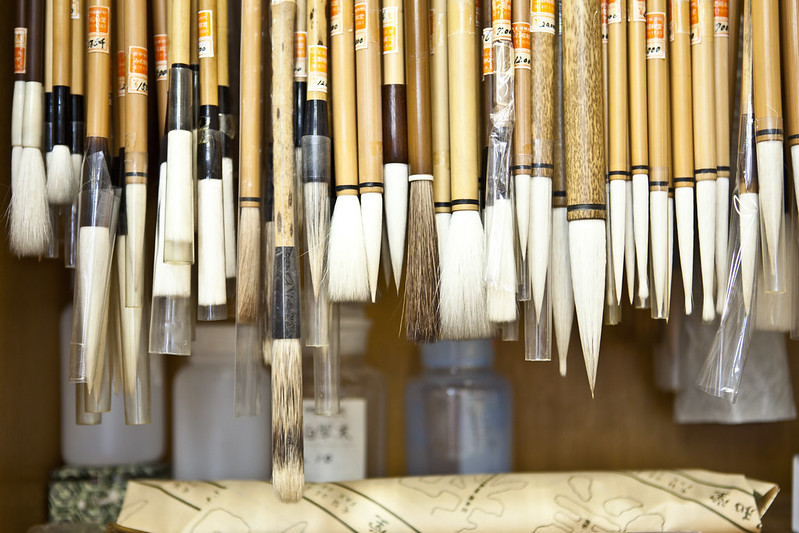
Distinctive Kumano Brushes
Kumano brushes are known for their quality and are recognized by Japan as a traditional industrial art. The craftsmanship put into the creation of fine handmade Kumano brushes is revered worldwide.
Kumano (熊野町), or Kumano-chō, is a town in Aki District, Hiroshima Prefecture, in Japan. The quiet town of Kumano is adjacent to Kure, Hiroshima, and Higashihiroshima, and is considered one of the commuter towns (towns whose residents work elsewhere) of those cities. Kumano-chō is considered the capital of brushes, as it is responsible for the production of 80% of the brushes made in Japan for writing, painting, and cosmetics.
Kumano’s brush making industry can be traced back to a time when farmers used to buy brushes and ink from the town of Nara and sell them to locals for extra income when rice harvesting was not in season. The Hiroshima local government encouraged this practice among residents until the people of Kumano began making their own brushes. When Japanese calligraphy became part of the school curriculum, a sudden increase in demand for writing brushes brought further stability to the industry in Kumano.
“Kumano-fude” (Kumano-brush) are handmade. Materials used are usually natural: hairs of sheep, itachi wolf, raccoon, or horse. The making of Kumano-fude involves a tedious process involving 70 steps to make just a single brush. It is said that it usually takes 10 years to master the craft of being able to handle animal hairs in the exact way to make the perfect brush. The tips of the hand-made Kumano brushes are naturally uneven. This produces just the right touch when the brush comes into contact with paper or, in the case of cosmetic brushes, the face. This creates a finish that matches no other. Kumano cosmetic brushes are famous among make-up artists.
There are traditional events held in Kumano that date back to 1926 such as the Fudematsuri (Brush Pen Festival), usually held during the Autumn Equinox in September. The Calligraphic Works and Art Competition and exhibition is a nationwide event whose goal is to support children’s expression and develop a rich appreciation for the art of calligraphy. This event showcases the use of Kumano brushes. The Brush Pen Studio (FUDE no SATO KOBO) which opened in 1994, also proudly exhibits the rich history and local culture of Kumano and the brush making industry. There is also “The Brush Pen Day” held during the Spring Equinox which seeks to revive the brush pen culture of Japan.
Learn more about Fudoki Kumano brushes in this video:
